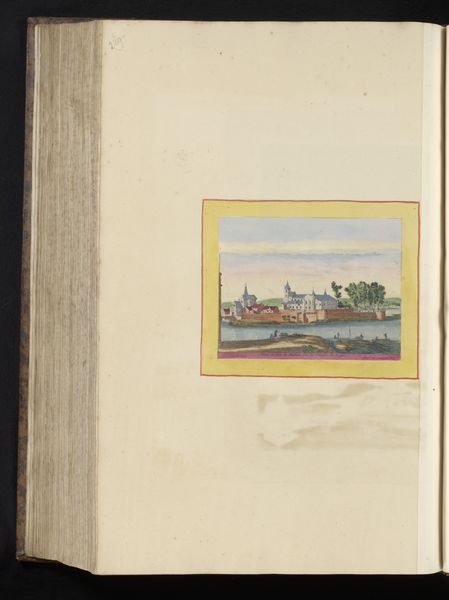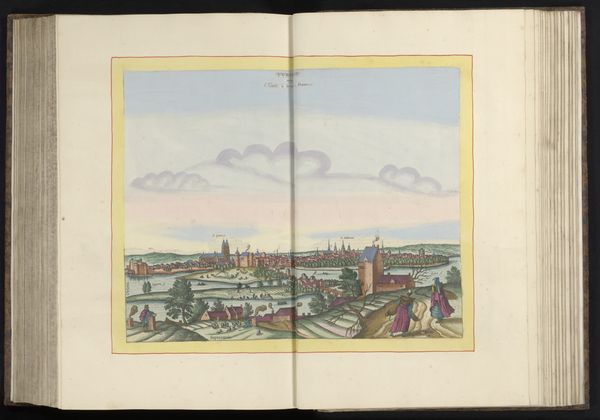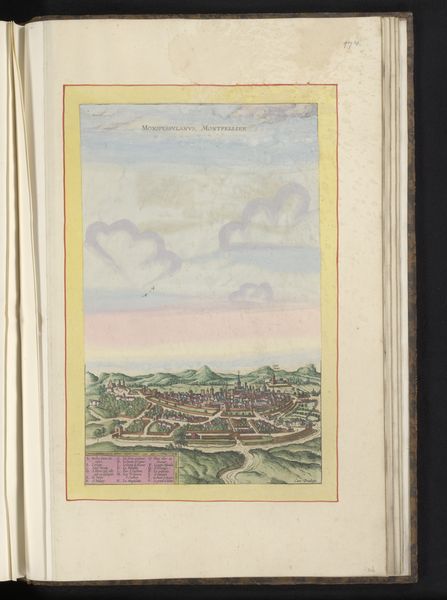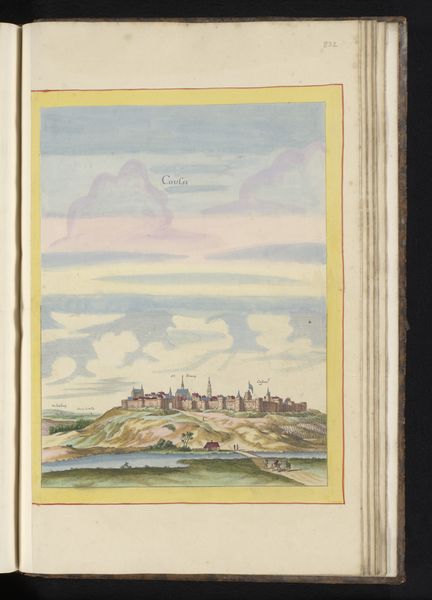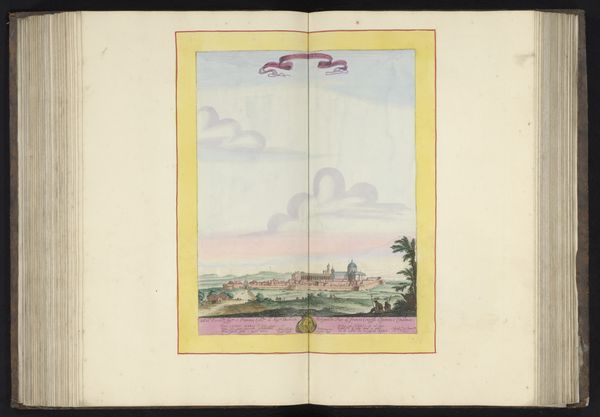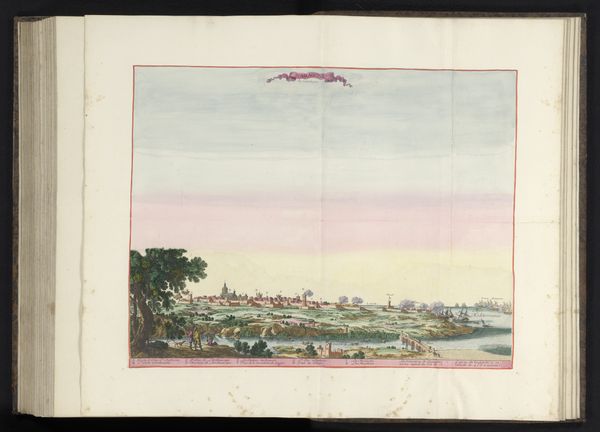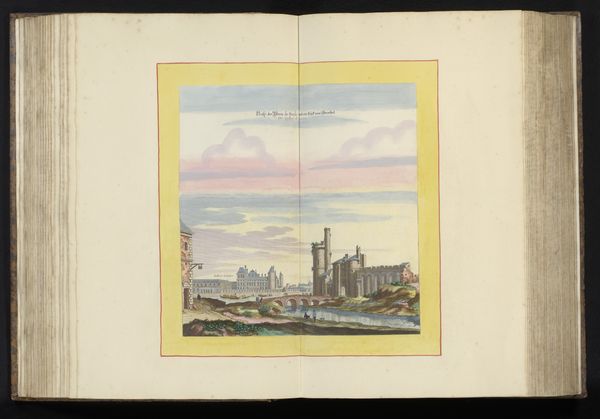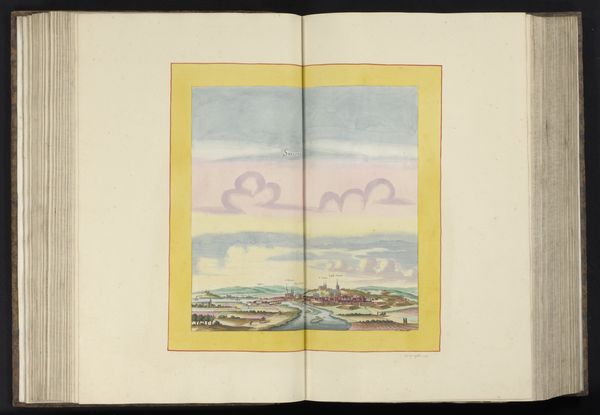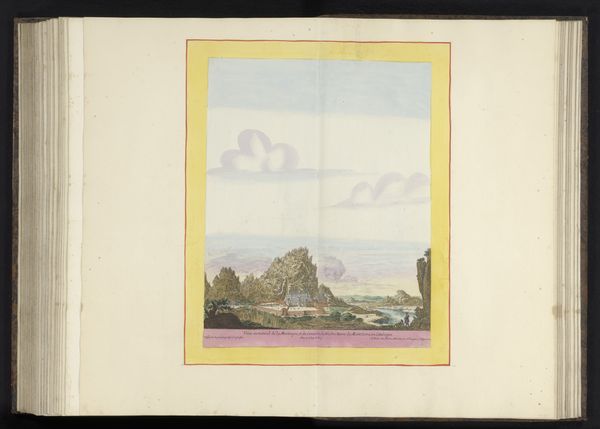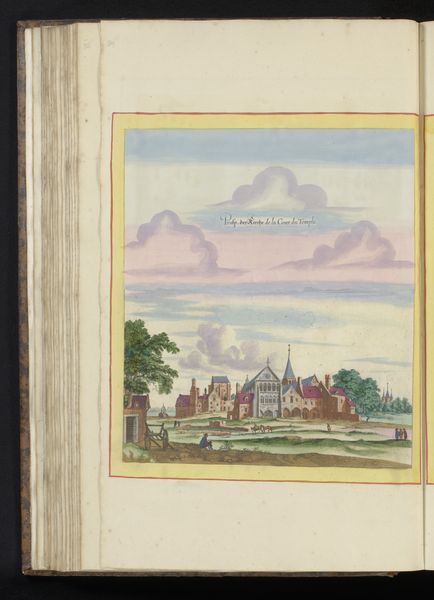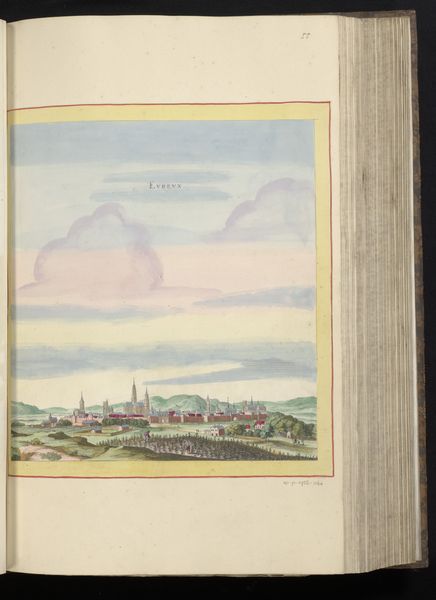
painting, watercolor
#
baroque
#
painting
#
landscape
#
watercolor
#
cityscape
Dimensions: height 307 mm, width 320 mm, height 536 mm, width 660 mm
Copyright: Rijks Museum: Open Domain
Editor: So this is "Gezicht op de stad Saint-Denis," or "View of the City of Saint-Denis," painted around 1655 by Matthäus Merian the Younger. It's watercolor, and it's just lovely. There's a serene calmness to it, even though it depicts a city. All those pastels...what do you see when you look at this piece? Curator: What a gem! Immediately, I'm struck by how meticulously Merian captures the scene, almost like a photographic memory translated into art. It's a Baroque landscape, but somehow also… introspective? He invites us not just to observe Saint-Denis, but to contemplate it, from a safe distance. It is both a landscape, a cityscape, and, perhaps, an encapsulation of the very idea of “city.” The framing, too, is part of it - almost an annotation within a book. Do you notice the figures he's placed? They aren’t separate from the land, but another extension of it, tied back into this "book-view." Editor: They do feel small, almost like afterthoughts compared to the cathedral. Is it typical to make the figures this small? Curator: That small scale actually adds to the grander scheme! It places humankind in its appropriate perspective to the power and glory of not just God represented in the physical presence of the church, but its own accomplishments in being. What if he deliberately shrunk these figures to accentuate the longevity, persistence, of the cityscape itself? Perhaps even hinting at what is to come, what it means to the individuals tied within that life, that structure. How terribly lovely and bleak! Editor: That's... wow. I hadn't considered that. It’s not just a pretty view, then, but also a comment about life's smallness. I like that perspective shift. Curator: It reminds us that we are here, now; that that image is a view from somewhere that someone saw and decided to hold into themselves to reflect and then display and now you can see it. Editor: Absolutely, the act of observation itself becomes the point.
Comments
No comments
Be the first to comment and join the conversation on the ultimate creative platform.

